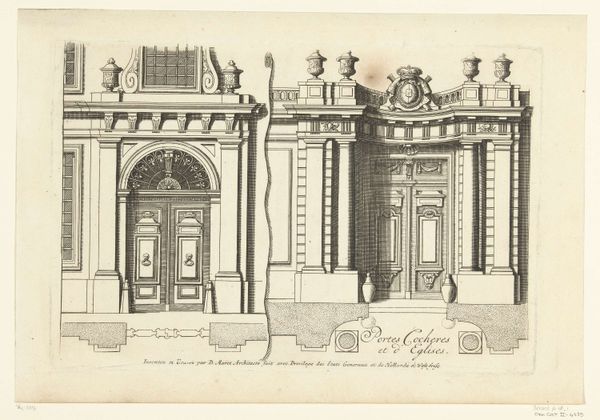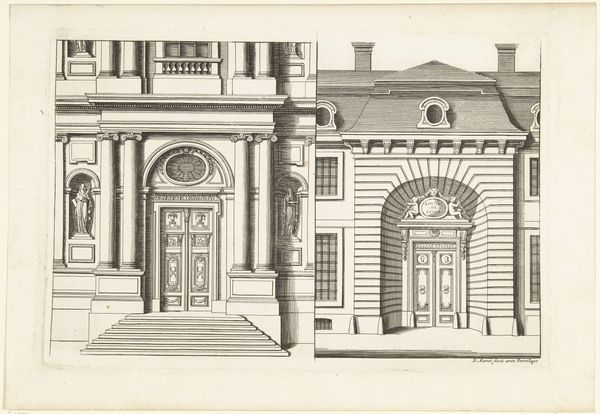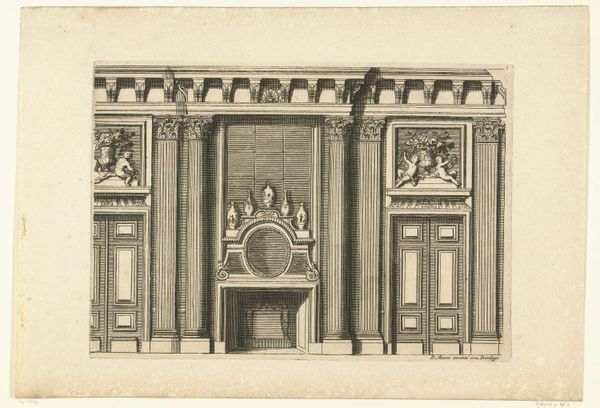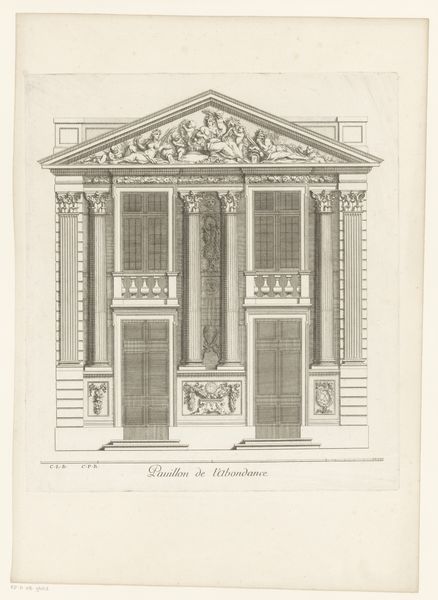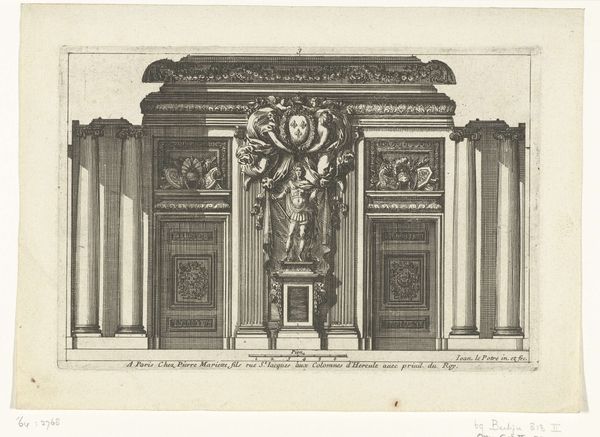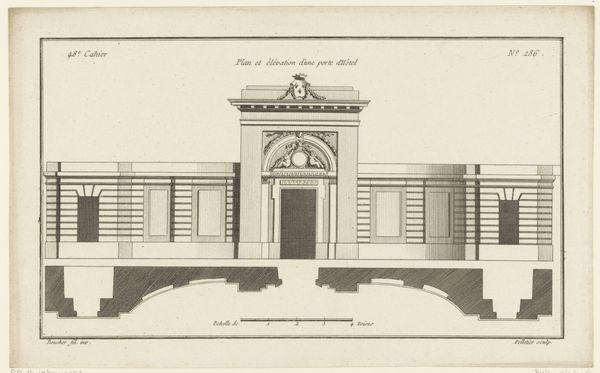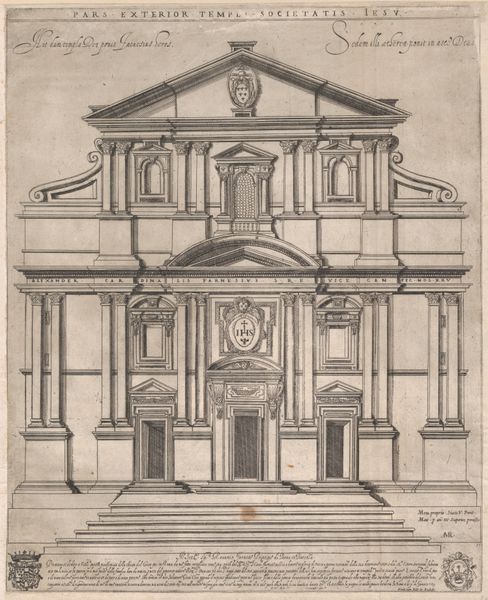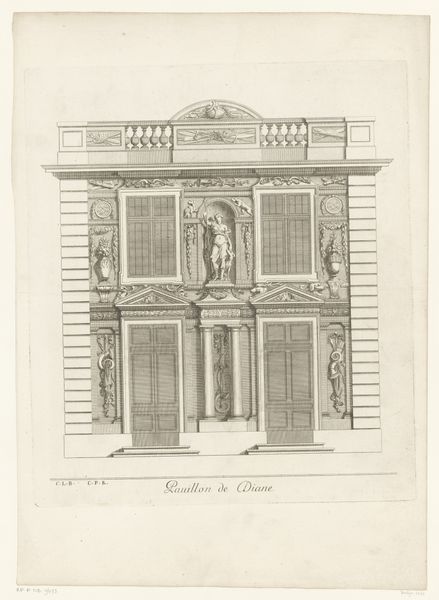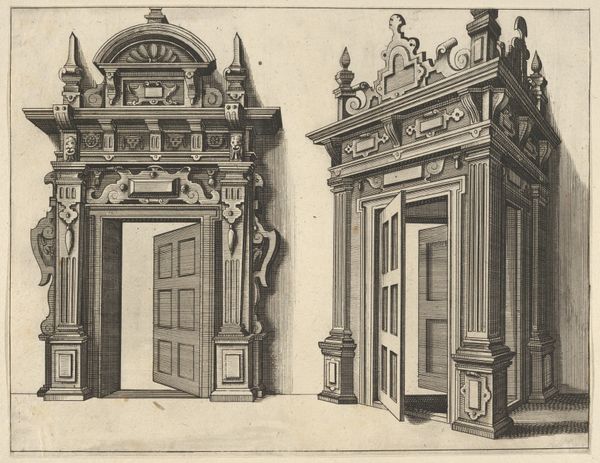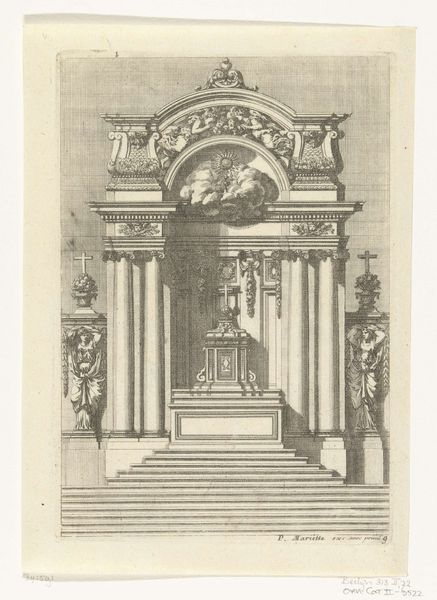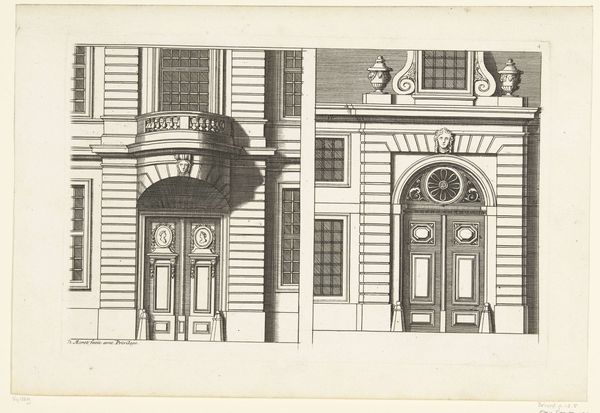
drawing, print, pen, engraving, architecture
#
drawing
#
baroque
#
pen drawing
# print
#
pen
#
engraving
#
architecture
Dimensions: height 189 mm, width 279 mm
Copyright: Rijks Museum: Open Domain
Editor: This pen drawing from the late 17th or early 18th century, titled "Portico van kerk en twee hekken" by Daniël Marot, showcases detailed architectural elements. I find the precision quite remarkable, but the overall effect feels somewhat…clinical, almost like a blueprint. What can you tell me about it? Curator: It’s fascinating to consider this drawing in the context of its historical function. It is a design after all, made to propose new additions to aristocratic estates or wealthy urban houses. Marot heavily influenced the Louis XIV style into the Netherlands. How does that knowledge affect your view of the “clinical” feel of the blueprint aspect? Editor: Well, knowing that it's a proposal shifts my perspective a bit. It’s not just an objective representation but a persuasive tool. So it shows design not as mere decoration, but as a language of power and influence at the time. Curator: Precisely. The careful rendering of the gates, the portico, they all speak to an era obsessed with status. It emphasizes the importance of the household commissioning this, not just design itself. Who can pass, how they should approach, who should be kept outside. This emphasis reflects how the powerful saw their place in the world and also a means to dictate the social hierachy. Notice the inclusion of allegorical statues flanking the entrance... how do they function rhetorically? Editor: They're like guardians, almost literally legitimizing who gets in and what is deemed important to protect. It's not only aesthetic! Curator: Indeed! Marot used architectural elements not just for beauty, but to reinforce power structures. He designed not buildings, but narratives of power, security and social stratification, making this far more than a mere "blueprint," don't you think? Editor: Absolutely, seeing it that way definitely gives the work more layers. It feels less like a technical exercise and more like a subtle declaration of societal values at the time. Curator: And how those values physically affected the experience of everyday life.
Comments
No comments
Be the first to comment and join the conversation on the ultimate creative platform.
